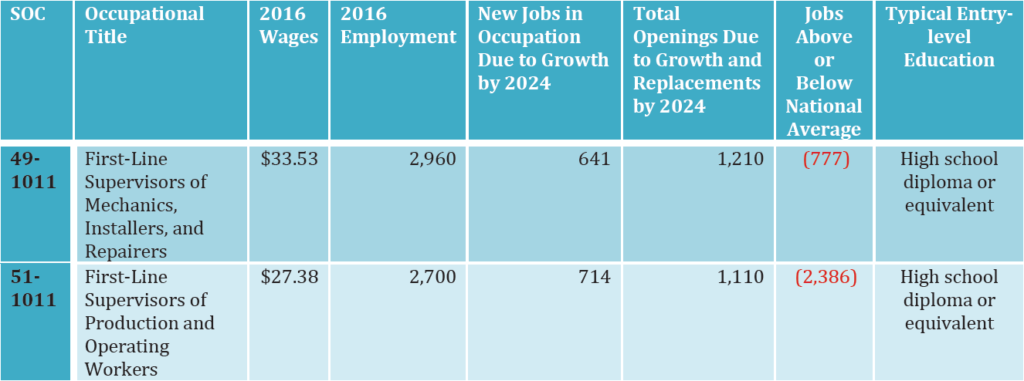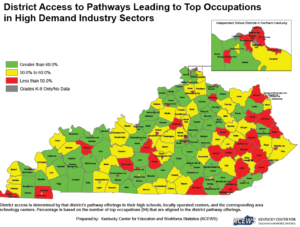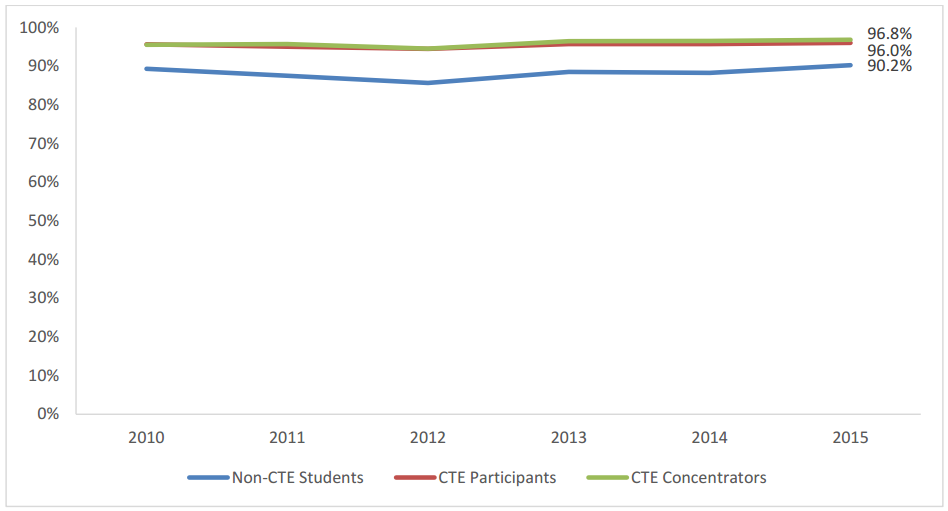As the legislative session moves forward, states have passed bills that will expand Career Technical Education (CTE) funding, strengthen workforce initiatives and expand scholarships that benefit CTE learners.
Idaho Expands CTE Program Funding
In Idaho, Governor Otter signed a bill to expand funding for high-performing career and technical education programs in grades 9-12 in high-demand fields. The Idaho State Department projects that there will be a shortage of 49,000 workers by 2024 in Idaho. By investing further in high-quality secondary CTE programs, Idaho creates a workforce pipeline that will help to address the “skills gap” and job shortage that the state faces.
Gov. Reynolds Signs Future Ready Iowa Bill
 In Iowa, Governor Reynolds signed legislation that establishes programs in Registered Apprenticeship development, voluntary mentorships and summer youth internships. The legislation also establishes summer postsecondary courses for high school students that are aligned with high demand career pathways, as well funds and grants related to an employer innovation fund and Future Ready Iowa programs, grants and scholarships.
In Iowa, Governor Reynolds signed legislation that establishes programs in Registered Apprenticeship development, voluntary mentorships and summer youth internships. The legislation also establishes summer postsecondary courses for high school students that are aligned with high demand career pathways, as well funds and grants related to an employer innovation fund and Future Ready Iowa programs, grants and scholarships.
The legislation is the latest piece in Gov. Reynolds’ Future Ready Iowa initiative, which aims for 70 percent of Iowa’s workforce to have education or training beyond high school by 2025. Currently, 58 percent of Iowa’s workforce has education or training beyond high school, and that percentage must increase in order to fill the 65,000 current open jobs in Iowa.
States Expand Opportunity Scholarships that Benefit CTE Learners
Additionally, states have been expanding postsecondary scholarship programs, which will allow more learners from different backgrounds to engage with CTE. In Washington, Gov. Inslee signed a bill that expands the Washington State Opportunity Scholarship to allow high school graduates to receive the scholarship to help pay for certificates and professional technical degrees offered at the state’s technical and community colleges.
As part of their continued focus on CTE, in Idaho, lawmakers passed another bill, which expands the Idaho Opportunity Scholarship to benefit adult learners. The scholarship originally only benefitted Iowa high school graduates, but the bill will allow the State Board of Education to direct up to 20 percent of scholarship funds to Idaho adult residents striving to finish a degree or certificate.
These bills will make postsecondary CTE accessible to more learners from diverse populations, which is critical as states face a shortage of skilled workers.
Brianna McCain, Policy Associate




 The Public Policy Forum, a research organization based out of Milwaukee, recently published a
The Public Policy Forum, a research organization based out of Milwaukee, recently published a  The study finds that, within the population of students that did not go on to a four-year degree, CTE students were 11 percent more likely to “achieve” than non-CTE students. According to the study, “achievement” is measured as persistence in apprenticeship programs, persistence in community and technical colleges, employment and certificate attainment. Additionally, CTE programs accommodated a higher proportion of students receiving free and reduced price lunch and students with disabilities than other non-CTE programs, indicating that CTE could be a strategy for students of all socioeconomic backgrounds and abilities to acquire the skills needed for high-demand, high-wage careers.
The study finds that, within the population of students that did not go on to a four-year degree, CTE students were 11 percent more likely to “achieve” than non-CTE students. According to the study, “achievement” is measured as persistence in apprenticeship programs, persistence in community and technical colleges, employment and certificate attainment. Additionally, CTE programs accommodated a higher proportion of students receiving free and reduced price lunch and students with disabilities than other non-CTE programs, indicating that CTE could be a strategy for students of all socioeconomic backgrounds and abilities to acquire the skills needed for high-demand, high-wage careers. 
